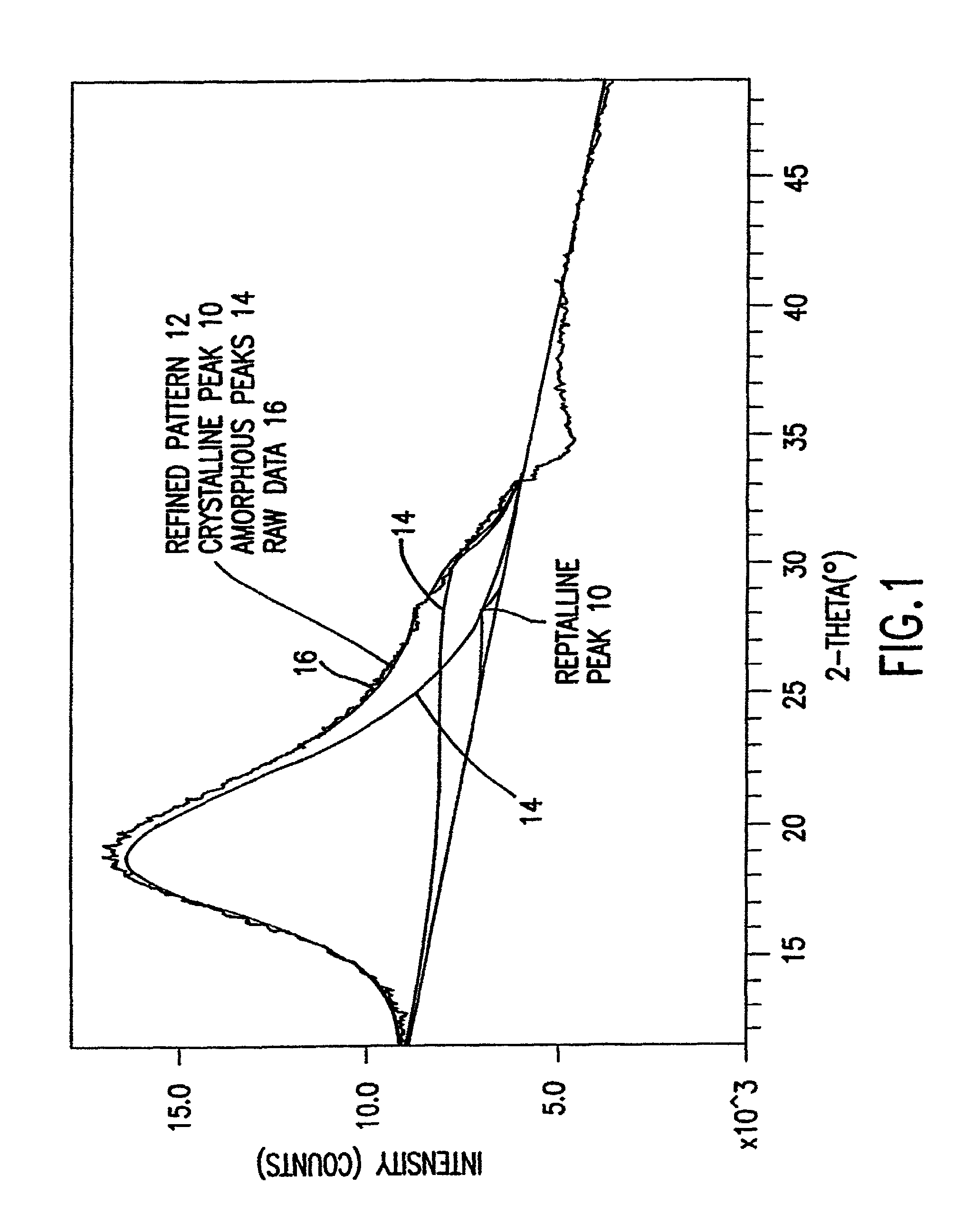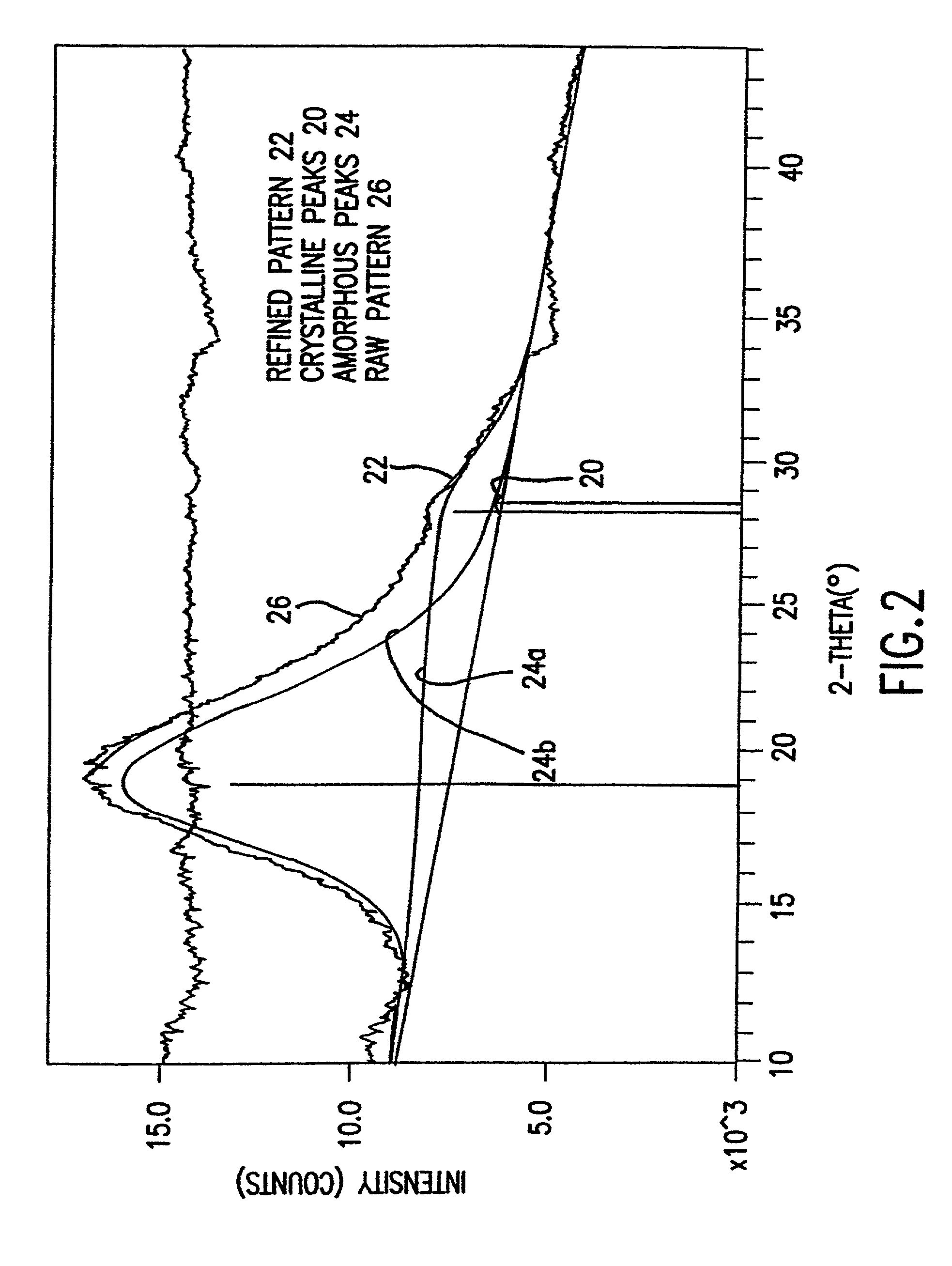Method for the preparation of non-blocking adhesive coated articles and cold seal bonded laminates
a technology of non-blocking adhesive and coated articles, which is applied in the direction of film/foil adhesives, chemistry apparatuses and processes, transportation and packaging, etc., can solve the problems of yellowing of many undesirable effects, changing bond properties, and reducing the bond strength of coated substrates and articles
- Summary
- Abstract
- Description
- Claims
- Application Information
AI Technical Summary
Benefits of technology
Problems solved by technology
Method used
Image
Examples
examples
[0085]Test procedures used in the examples include the following.
Brookfield Viscosity
[0086]The viscosity of a sample is determined using a #2 spindle at 20-rpm and 25° C.
Blocking Peel Strength Test
[0087]2.54-cm×15.24-cm strips of 1.8 kg / 279 m2 bleached medical grade paper E.B. Eddy Forrest Products LTD (Espanola, Ontario) are coated with adhesive composition at a dried coat weight of 1.36 kg / 279 m2. The coated side of the paper is then contacted with the non-coated side of the paper at ambient temperature and wound into a roll. A 1 in×1 in×1 in sample is cut into the roll, removed from the roll and discarded. A second sample that includes layers of cold seal adhesive coated substrates is then cut into the roll at the point exposed by the removal of the 1 in×1 in×1 in sample. The second sample is then removed from the roll.
[0088]The blocking peel strength of the sample, which is the 180° peel strength of the bond between the adhesive coated surface and the non-adhesive...
example 3
ed onto 40-pound bleached medical paper and dried in a forced air oven. The dry-coated substrate had a coat weight of 3-pounds per ream. The dry-coated substrate was then consolidated in roll form wherein the dry-coated side was in contact with the non-coated side. The roll stock was then conditioned at 120° F. for 24-hours. After conditioning, multiple layers of 2.54-cm×30.48-cm strips were cut from the roll stock. The strips blocking characteristics (i.e., blocking peel strength) were evaluated using a Thwing Albert Friction Peel Tester Model 225-1 run at 30-cm per minute. The average 180° peel value (i.e., blocking peel strength) was less than 18 g / linear in.
examples 5-7
[0101]Example 5: Aqueous AQS 2540 polychloroprene was poured into a silicone release mold and dried in a convection oven for 7 days at 50 C to form a film having a thickness of 10 mil. The film, when analyzed according to the Crystallinity Test Method, was determined to have 1.3% crystallinity. A plot bf the Intensity vs. 2 Theta (°) for the film of Example 5 is shown in FIG. 1 and includes crystalline peak 10, refined pattern 12, amorphous peaks 14 and raw data 16.
[0102]Example 6: Aqueous Dispercoll™ C-74 polychloroprene was poured into a silicone release mold and dried in a convection oven for 7 days at 50 C to form a film having a thickness of 10 mil. The film, when analyzed according to the Crystallinity Test Method, was determined to have 0.1% crystallinity. A plot of the Intensity vs. 2 Theta (°) for the film of Example 6 is shown in FIG. 2 and includes crystalline peak 20, refined pattern 22, amorphous peaks 24 and raw data 26. Example 7: Aqueous Aquastik™ 1120 polychloropren...
PUM
| Property | Measurement | Unit |
|---|---|---|
| Tg | aaaaa | aaaaa |
| Tg | aaaaa | aaaaa |
| pressures | aaaaa | aaaaa |
Abstract
Description
Claims
Application Information
 Login to View More
Login to View More - R&D
- Intellectual Property
- Life Sciences
- Materials
- Tech Scout
- Unparalleled Data Quality
- Higher Quality Content
- 60% Fewer Hallucinations
Browse by: Latest US Patents, China's latest patents, Technical Efficacy Thesaurus, Application Domain, Technology Topic, Popular Technical Reports.
© 2025 PatSnap. All rights reserved.Legal|Privacy policy|Modern Slavery Act Transparency Statement|Sitemap|About US| Contact US: help@patsnap.com



